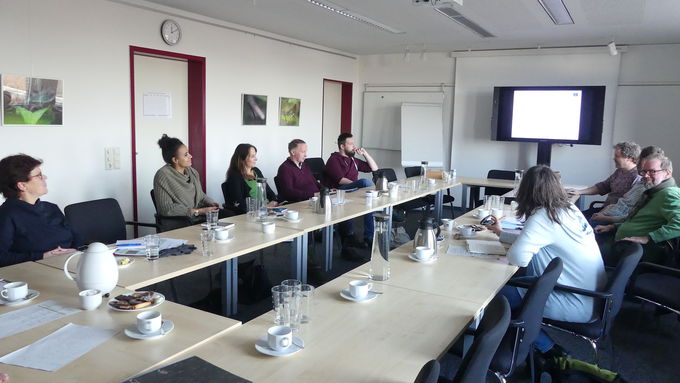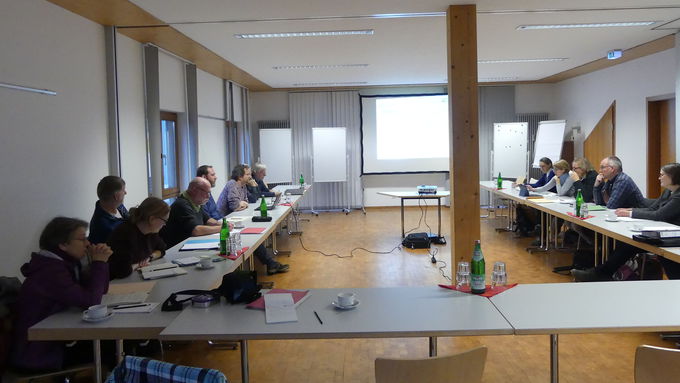At the last attendance-based meeting of the TIG in the administrative district of Münster the implementation and planning of actions were discussed. © Martina Raffel
main content
Project of the month
#4/2021
Regional technical and implementation working groups in North Rhine-Westphalia
The regional technical and implementation working groups (TIGs) are in North Rhine-Westphalia a fundamental component of the LIFE IP Atlantic Region DE for planning and implementation of concrete actions. Already at the application stage of the LIFE IP, the TIGs had been successfully established. In each of the administrative districts of Detmold, Düsseldorf, Cologne and Münster a TIG meets regularly. Only in the administrative district of Arnsberg no such working group exists, as there is merely little overlap with the Atlantic region. In the regional working groups the stakeholders which are directly involved in the planning and implementation of nature conservation measures meet. These are, besides the higher nature conservation authorities, mainly the biological stations and the lower nature conservation authorities of the districts. Altogether, so far 24 districts or cities are involved in implementing actions within the framework of the LIFE IP. Additional participants are partly nature conservation NGOs and regional forestry offices. Besides the implementation of actions, the regional technical and implementation working groups also aim to inform about the objectives of Natura 2000 in general and to support professional exchange in the regions.
At the beginning of the LIFE IP, the regional meetings were important to disseminate the project background and objectives and to establish or to strengthen co-operation with local partners. As these have been established by now, the participants of these meetings now mainly inform each other about the ongoing actions and those foreseen and planned for later project phases. As a rule, the TIGs meet once a year – in Corona times, this is done purely digitally via video conferences as an alternative, as was the case most recently at the meetings in spring 2021. So far, there have been 21 meetings of the TIGs with a total of about 50 regularly participating persons or institutions.
The working groups – and the strategic implementation of actions – on the one hand follow a top-down approach, as the LIFE IP evaluates the specific needs for the habitat types and focus species in the entire region as well as the potentials from the state’s perspective. On the other hand, also the bottom-up approach is used, as the local stakeholders can elaborate and implement the specific actions based on their outstanding knowledge of the areas, their technical expertise as well as their local networks.
In addition, the meetings offer the opportunity to inform about general public relations work and coordinate specific needs for the single actions or subjects or to plan joint events such as excursions or participation campaigns. Furthermore, topics for professional events such as seminars or workshops can be proposed. A further important objective of the working groups is to increase the implementation of Natura 2000 and strengthen the Natura 2000 network also outside of the LIFE IP, for example by continuing measures after successful implementation within the LIFE IP with the support of other funding opportunities or in additional areas or for subjects of protection which are not in the focus of the LIFE IP. Here, the LIFE IP can provide support for the application and implementation of other (LIFE) projects.
Thus, the TIGS offer the opportunity to include all relevant information for the specific action on site into the implementation of actions and to increase the public awareness as well as the acceptance of the LIFE IP and Natura 2000 in general with the local and regional stakeholders.





